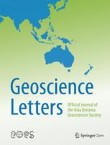The simulation of the Indo-Pacific warm pool SST warming trend in CMIP5 and CMIP6
This paper evaluates Indo-Pacific warm pool (IPWP) sea surface temperature (SST) warming biases of Coupled Model Intercomparison Project Phase 5 (CMIP5) and CMIP6. The IPWP warming trend in the CMIP5 multi-mod...
